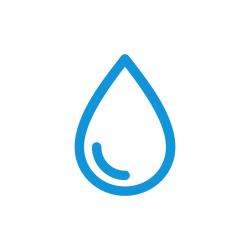When a large building's* plumbing has gone through a period of low or no use, it's wise to follow these steps and flush out water that might be stagnant.
* Large buildings include hospitals, schools, churches, government buildings, dormitories, apartment buildings, condominiums and dorms.
The following are some example attributes within more complex plumbing systems:
- Fire protection or sprinkler system
- More than one hot water system
- Hot water recirculation
- Connections that require backflow preventers
- Connections to mechanical systems (e.g., cooling towers, heating water, humidifiers)
- Connected equipment, such as those found in commercial kitchens, industrial processes, laboratories, healthcare, ice machines
- Water treatment and filters
- Domestic water booster pumps
- Emergency showers or eyewashes
- Age of system, age of building, previous renovations
- Multi-use buildings
If your building has any of these features, you may need to follow these steps to ensure excellent water quality.
Why It Matters
Property owners are responsible for maintaining the quality of water within building plumbing systems. When plumbing systems aren't in routine use or don't receive routine maintenance, water can become stagnant, leading to disruption of scale and biofilm attached to the interior of pipes.:
- Can result in increased bacterial growth
- Can result in loss of disinfectant chlorine residuals.
- Elevated levels of harmful disinfection byproducts.
- Stagnant water in corroding iron pipes might also develop an undesirable color
- This stagnant water can be unsafe for consumption
To protect the health and safety of occupants, WSSC Water recommends that before reopening, building owners or managers take the proactive steps outlined below to inspect and maintain building water quality Flushing the plumbing system helps restore safe, clean water for occupants to use. For assistance with carrying out these recommendations, consult a WSSC Water-licensed plumber, licensed engineer, or someone who specializes in building water management.
WSSC Water has created these recommendations to help customers restore building water quality after any closures or periods of low use. The intent of these recommendations is to help restore water quality due to possible stagnation and does not address water quality issues that existed in buildings prior to stagnation. These recommendations are based on guidelines from the U.S. Environmental Protection Agency, the Centers for Disease Control and Prevention, and the American Water Works Association. Every building is different and may require unique methods to restore water quality.
Before Flushing
We recommend that initial flushing be performed by a person who specializes in building management.
- Notify everyone in the building not to use or consume water until flushing is complete.
- We recommend that initial flushing be performed by a person who specializes in building management with proper ventilation and personal protective equipment to avoid potential infection with Legionnaires’ disease.
- Survey the water system for the following:
- Location of incoming water service
- Water treatment systems
- Water heating systems and recirculation
- Water storage systems
- Backflow preventers and connected equipment
- Distribution zones
- Sketch a plan or create a diagram of building water systems, components and zones.
- Take steps to prevent flooding or damage; make sure drains are open and clear.
- Clean and remove all aerators. Leave them off during flushing.
- Clean all faucets and showerheads.
- Discard all ice from ice makers.
- Maintain any water treatment systems, including whole-house water treatment, point-of-use filters or water softeners.
- The building manager must determine whether it is feasible or safe to bypass these devices during flushing, as some of them are placed in service for a reason.
- If it is not feasible to bypass, they should be carefully inspected, cleaned or flushed separately.
- Check all mechanical equipment, such as boilers, cooling systems, backflow preventers, and sprinkler systems, to ensure there are no opportunities to reintroduce stagnant water.
Initial Flushing Instructions:
- Flushing should proceed zone by zone, starting from the point of entry and progressively moving toward the farthest point. This is called unidirectional flushing.
- Begin flushing the zone(s) closest to the water supply point of entry, repeating the process in all zones and moving progressively outward from the water supply point of entry.
- Next, repeat the flushing process with hot water. Run water until the water temperature remains stable for a few minutes.
- Replace all point-of-use filters, including filters in refrigerators and ice machines.
- Check all backflow prevention devices for test tags and up-to-date testing.
- At the end of initial flushing and until water quality is fully restored, WSSC Water recommends testing the water for chlorine residual and coliform bacteria. The residual-free chlorine level must be no less than 0.1 mg/L and total coliforms must be absent. Here is a list of laboratories certified by the Maryland Department of the Environment.
Ongoing Flushing and Maintenance
For small and large buildings with onsite underground water conveyance, we recommend that customers repeat the flushing process until water quality is fully restored.
Depending on the size of the onsite water conveyance system and the length of the vacancy, additional treatment measures may be necessary. This includes disinfecting the entire water system with highly chlorinated water, and subsequently flushing to remove high levels of chlorine and testing for coliforms to ensure the system is free of bacterial contamination.
WSSC Water monitors water quality throughout our service area at least once a week. We can provide water quality data at the nearest monitoring location to your facility.
Contact Us
Additional precautions may be warranted if there are still concerns about water quality. If discoloration, odor or taste issues persist:
Questions still? We have answers...
Flushing FAQs



